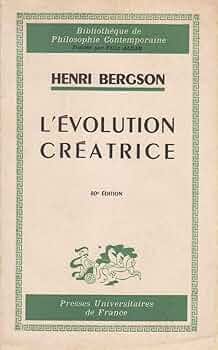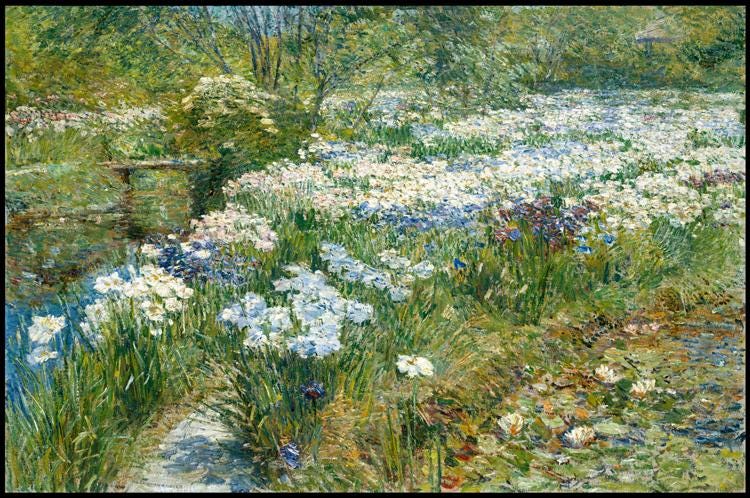I mentioned Bergson at the end of my last piece. The present essay interrupts “Darkness is Growing, Eternity Opens”, part 1 of a review/essay on Knausgaard’s Morgenstjernen.
In reality, the past is preserved by itself, automatically.1
I always had a hard time getting past the first clause, to say nothing of the first sentence, of the French philosopher Henri Bergson’s Creative Evolution:
The existence of which we are most assured and which we know best is unquestionably our own[.]
This is exactly what I find questionable, unless he means “our own corporeal existence”, in which case the supposed unquestionableness of the knowledge is in directly inverse proportion to its interest.
The existence Bergson is referring to—here I am inferring rather heavily, since, as I said, I can’t seem to see the comma after that first clause as anything other than a red stop sign—is probably that “inner existence” of the mind.
Immediately, accusations from the censor are filed: confused psychologism, shallow vitalism.
This inner existence seems not to be an existence at all. I might amend his first proposition in the following way:
The only non-existence of which we know anything directly is our own.
Thinking back on other texts of his, I am nevertheless sympathetic to Bergson’s critique, namely the confusion of time with space in everyday, specialized, and philosophical language (I read his Time and Free Will, but it was years ago). It makes sense to me that when we use spatial language to talk about time we should find ourselves confronted constantly by philosophical problems that really aren’t problems at all but the mirages of our pervasive and heavy use of metaphor.
People pose questions like “Is time something we have or something we’re in?” Ask the same question of space to see how “philosophical” the question really is.
When I try to conceptualize what Bergson might mean by duration (inner time as opposed to concrete, spatially measured time), I inevitably think of Schopenhauer’s remarks on music and the will.
So, we should be aware when using the language of space to talk about something like “time”. But we at least know what it means to do this. What about the converse? Can we use the language of time to metaphorically talk about space? I can’t imagine what this would look like in a statement. And the language of duration?
But the phrase “the language of space” still somehow makes sense, even if we feel that it misleads us about time, duration, the will—whatever. The whole situation is a one-way street of metaphor.
I have finally read past the first comma of Creative Evolution. It turns out that all of my pre-criticism can be suspended by a few drinks after dinner. The censor I spoke of is off-duty. I imagine the French contours of the original text of Bergson’s book, and the untranslated title, L'Évolution créatrice, which has a very different ring to it, and my resistance relaxes. I’m not a philosopher, but having an intellectual conscience, “going the hard way,” is important—which, I have to remind myself, I can have and do after the act, once I read the book.
A few pages in, I came to this surprising line, with which I felt immediate sympathy:
Memory, as we have tried to prove, is not a faculty of putting away recollections in a drawer, or of inscribing them in a register. There is no register; no drawer; there is not even, properly speaking, a faculty, for a faculty works intermittently, when it will or when it can, whilst the piling up of the past upon the past goes on without relaxation. In reality, the past is preserved by itself, automatically.2
Memory, then, cannot only be an “internal” phenomenon of cognition. When the hummingbird remembers, out of thousands of flowers, those from which it has taken nectar, is it right to say that they do this out of a strong power of memory “located” in their brains? It is as if the flowers already remembered for them. The hummingbird and its attitude, its engagement with the flowers, is like a value being put into the parameters of a function (the clusters of flowers). It is a dance. Part of the result is that the hummingbird externally “remembers” which flowers it has already visited. This kind of memory is like a dynamic, organically functional mnemonic into which one breathes something of one’s spatial body.
This is obviously not memory in the usual sense, the conglomeration of imagination, a pose of reflection, a rubbing of the chin or forehead, a phrase remembered but unspoken, a regret, a wish, a sprinkling of fantasy and repetition into a play of images located indistinctly in one’s past—nor does it perfectly correspond to déjà vu and jamais vu, for this kind of memory is not a shift in aspect perception that makes everything seem different precisely because nothing has changed. One feels that this kind of memory at least has something to do with a Proustian kind of involuntary memory, but this is also not right. The species of memory detailed in such remarkable tracery by Proust is of the internal kind to which Bergson is referring—but which I am now diverging from—which is, at least sometimes, like a deeply sown seed, requiring not only proper environmental conditions but an unbroken continuity of duration within which to germinate and eventually sprout, out of the dark soil and into the light of a strongly self-reflexive awareness of oneself and things.
The memory that this quote describes to me is mysteriously external. This memory is when two patterns short-circuit into one another.
This is present over and over in Sebald’s books. These externalized non-psychological memories are the fabric out of which his anti-narratives are made. A town or a house is passed through, a motif is seen from a distance, an acquaintance is made, a story is heard. And time passes. But it is not the hidden, continuous time of Proust’s memories. It is a discontinuous time that pools into the disparate islands of separated space, of mnemonic extension. And then there is a moment, not of déjà vu, nor of recollection, but of significant, meaningful confusion, when a thing, the town, the house, the observed motif, the acquaintance, the story retold, all having been left aside, but not forgotten, shows its face once again in and through another configuration. This is how Michael Hamburger, in The Rings of Saturn, becomes Hölderlin. The present doubles and the subject becomes a point of confusion between another space in whatever past. Space can take precedence over time in Sebald. With Proust, and with Bergson (who I should say I’m still trying to be sympathetic toward), time takes the lead with space as a supporting role.
The first chapter of W.G. Sebald’s book The Emigrants begins with the epigraph: And the last remnants memory destroys.3 Memory here is not ever-accessible Proustian–Bergsonian memory of remembrance and recollection. It is that great, soulless memory of plain space through which we move every day, that is always hiding in full view and which nevertheless seems to conspire and even to speak. The remnants it destroys are not those of life lived, but of the significance (meaning), deposited in our hearts like small pieces of gold sifted from a river, of that other genus of memory which we always carry inside ourselves.
If you like this piece, you may also like “my dear time’s waste”.
Quoted in Bergson, below.
Henri Bergson, Creative Evolution. 5.
W.G. Sebald, The Emigrants, Vintage, 1992.






